How to install sliding interior doors
In an effort to make the house more comfortable and cozy, the idea often comes to replace ordinary swing doors with sliding doors (they are also called sliding, sliding, suspended). The good news is that you can easily install sliding doors yourself. The bad thing is that a normal mechanism costs about the same as a high-quality canvas. What captivates them is the moment that in the open state they hardly "eat up" the space. They either hide in the wall (the best, but more difficult option to implement), or move along it.
All this is true, but there is a significant disadvantage - a very low degree of sound insulation, especially in the version of the compartment door. When the canvas just covers the opening. When installed in a pencil case (in a wall), the situation is slightly better, but the degree of sound insulation of the swing door cannot be achieved with this installation method. If all this does not scare you, you can start studying systems, choosing, and then installing.
The content of the article
Sliding door systems
There are two types of mechanisms: suspended and rail. Both are not perfect. Briefly about their advantages and disadvantages - below.
Suspension system on the top rail
The suspension mechanism is a supporting beam, to which a guide in the form of the letter "P" with "legs" bent inward is attached. The rollers move along this guide, to which the door leaf is attached. In technical terms, this is a hanging door on the top rail.
When installing such a door, the floor under the door remains smooth, only the lower roller is installed on the right and / or left in the doorway. It slides along a groove made in the lower end of the blade. It is necessary so that during movement it does not deviate vertically. This design is the easiest to install. Installation is very simple and consists of several steps:
- fix the top rail;
- screw the roller mechanism to the upper end of the blade,
- roll the canvas into the guide;
- install stoppers at the top (so that the doors do not fall out);
- after opening the doors, insert the lower roller into the groove, fix it on the floor.
That's all. Roller doors installed. But this system, as shown in the photo, has very low noise insulation characteristics. They are practically zero: the passage is simply blocked.
Sliding rail doors
This type of door has two rails: an upper and a lower one. The rollers are also installed at the top and bottom. Thanks to this design, the system has a high degree of rigidity: it can be wobbled, and this will not cause much damage.
The disadvantage of the rails in the floor is known: the difficulty of cleaning. Debris and dust constantly get into the grooves, you have to monitor their cleanliness. This type of door is most often used in wardrobes, dressing rooms... They are installed as interior doors if mobile children grow up in the family. Then safety is more important than the difficulty of cleaning.
Mounting options
Regardless of the sliding door system, installation methods can be:
- Compartment doors. On the wall, guides are fixed along which the canvas rolls.
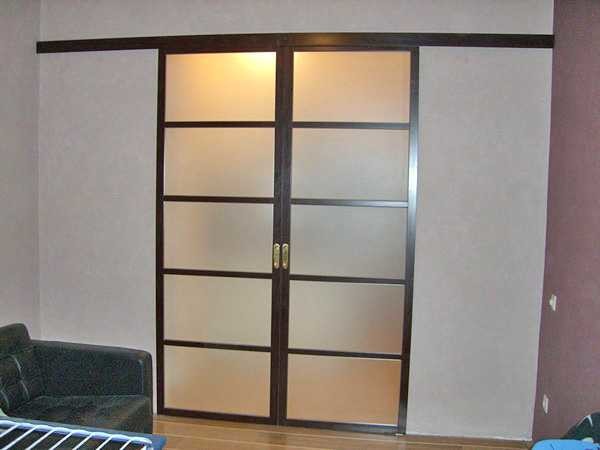
Compartment doors. The guide is mounted on the wall above the correct opening
- Cassette. A special niche is made in the wall, into which the door leaf is hidden. They are also sometimes called! Retractable. "
- Cascading.They consist of one fixed blade and several movable ones. Movable, if necessary, move and hide behind the fixed part.
The easiest installation option is sliding doors. They can be installed independently, not only at the stage of repair, but also after it. It is only important that the opening is even, and the wall has a normal bearing capacity. The disadvantage of such a system is that you cannot put anything close to the wall in the place where the door rolls back. There is one more: very low sound insulation. The explanation is simple: if you look from the end, there is a gap of a few millimeters on the sides. It is necessary so that the canvas does not "scuff" on the wall. And all sounds perfectly penetrate through it, becoming only a little quieter.
Cassette doors are good because, when open, the canvas is in the wall niche and does not interfere. The second plus is that seals can be installed around the perimeter of the opening, which give much higher sound insulation performance. The disadvantage of installing a sliding door in a niche is that it can only be done at the repair stage. The second drawback: to make a pencil case for sliding doors, they usually put a false wall, and this is stolen centimeters of the area.
Cascading - one of the varieties of compartment doors. It just has more guides: according to the number of movable door leaves. Installation is perhaps the most difficult: there are a lot of details and high accuracy of installation is required. The systems are classified as elite, and they rarely save on installation: repairs will cost more.
Features and installation procedure
You can even put sliding doors with your own hands without much experience. It is quite possible to do without installers. It will take a little time, and also installation instructions. We will try to give a detailed description of the process with photo and video materials.
Self-installation of sliding interior sliding doors
The systems may differ slightly, but the general rules remain the same. There are several requirements that must be met prior to installation:
- The opening must be even, otherwise you will have to take the canvas, which covers all deviations with a margin.
- The bearing capacity of the sides of the doorway should be high, as well as the wall above it.
- The opening must already be finished: plastered and painted, covered with wallpaper or decorated with decorative panels.
Next, we start assembling. You can attach the rollers first. Different manufacturers have their own recommendations. Some recommend retreating 1/6 of the width of the door leaf from the edge, in other systems they are attached immediately from the edge, and the indentation is provided by mounting plates. We install just such a system: in it, roller platforms are installed immediately from the corner.
We center them, measuring so that the distances are the same. Putting the plate, with a pencil or marker, mark the places for the fasteners. We drill holes in the marked places. The drill diameter is 1 mm less than the screw diameter.
We expose the plates, screw in the screws. The length of the fastener depends on the weight of the blade, but not less than 70 mm. We twist them exactly perpendicularly, otherwise unnecessary stresses will arise.
Roller supports are inserted into the installed plates. They are fixed with a cover on the side surface. Next, roller platforms are screwed onto the threaded pins.
It is also convenient to install handles and locks before hanging. They need special, mortise. If you bought a ready-made kit, the required holes are available. If you have adapted an ordinary canvas, you will have to trace the contour with a pencil, and remove the excess with a chisel. After the handle or lock enters the recess, the attachment points are marked, holes are drilled under them and the fittings are installed.
Next, you can proceed with the installation of the guide.With the rollers mounted, it will be easier: you know exactly at what height the bottom edge of the rail should be.
The most convenient way is to hang the sliding doors on a dry wooden beam. Its cross-section is less than 50 * 70 mm, its length is double the width of the door leaf + 5 cm. Cut the guide to the same length.
Having set the guide along the bar, it is attached to the bar with self-tapping screws at least 8 cm long. The number of fasteners - at least three - stepping back 10 cm from the edges and in the middle (more often, less often - not).
Now you can measure at what height the timber should be fastened. On the door with installed rollers "roll" a guide with a bar. So you can accurately mark how high the doors turned out. Drill at least four holes in the side edge of the timber for fastening to the wall.
7-10 mm is added to the resulting mark - the doors should hang, and not scuffle on the floor. 7 mm is the minimum gap, which is sufficient if there is no floor covering in the opening. If they are supposed (to lay later laminate, carpet, linoleum, etc.), then the thickness of these coatings must also be taken into account.
So that during installation the canvas does not "walk", it is jammed with small wooden wedges. You need at least two stops - near both rollers.
Having attached the timber to the wall and correcting its position using a level, we mark its position with a pencil. If the wall allows, you can fix it to the wall through and through, but for this you take self-tapping screws with a length of at least 120 mm, and it is better to put it on anchor bolts.
If the wall is, for example, concrete, the installation of dowels is required. To do this, you need to transfer the marks for the fasteners to the wall. This can be done with a thin and long drill, the diameter of which is smaller than the drilled hole.
An even simpler option: a long, thin nail. It is inserted into the hole and a mark is made on the wall with a couple of strokes. Further, the procedure is known: we drill holes for the plugs of the dowels, insert the plugs, if necessary, hammering them. Then we mount the doors.
Stoppers must be secured along the edges of the guide. They are brought in from the sides, empirically set the required location (so that the canvas covers the opening completely in the closed state, and rolls back enough when opened. They are fixed with clamping screws.
Having opened the doors, we set a flag roller on the floor. It goes into a groove cut out at the bottom of the blade. It is necessary so that the doors do not deviate vertically.
First, we insert it into the groove, mark the holes for fasteners, drill, then fix it with short self-tapping screws (length about 15-20 mm).
On this we can assume that the sliding doors have been installed. They are already fully functional. Finishing work remained. The mounting bar with a guide is covered with a decorative strip, matched to the tone of the door leaf. It can be nailed with finishing nails directly to the timber.
Only when you expose it, make sure that the wheels are closed. So much more beautiful)) Now - that's it, you installed the sliding doors with your own hands.
A video tutorial on installing such a door is shown below. There are several installation options.
We mount sliding doors of cassette type (in a pencil case)
The very process of installing the guide, hanging the door leaf almost one-to-one repeats those described above. There is no need only for finishing, and all other steps are necessary. Instead of installing a decorative strip, a false wall is mounted at a distance of at least 10 cm from the wall.Usually it is made of plasterboard profiles, which are sheathed with plasterboard wall. But this is not important - you can use gypsum fiber board or plywood, any other suitable material.
Where does the 10 cm distance come from? The thickness of the door leaf and the gaps on both sides is 5 cm. At least another 5 cm is added to them for the installation of the profile. So it turns out 10 cm.
Since the main load will fall on the wall, the frame from the profiles need not be reinforced. If such a wall does not seem very reliable to you, you can insert wooden blocks inside, which you can fasten with self-tapping screws. This will make the structure very rigid.
The basic principles of calculating a pencil case for a sliding door, as well as marking features, principles of preparing a doorway for installation, see the video.
Homemade sliding doors
Any door leaf can be installed on rollers and will work as a sliding door. The guide and all other components - rollers (bearing and flag), stoppers, stops - can be bought. Hang on them at least a piece of plywood or a door assembled from several boards. That will be the simplest and cheapest option.But making the mechanism yourself is a more difficult task. One of the options for a sliding door mechanism made from scrap materials (from round pipes of different diameters) in the video. The system was supposed to be installed in a closet, but judging bydesigns, easyeven an oak solid wood door can withstand.

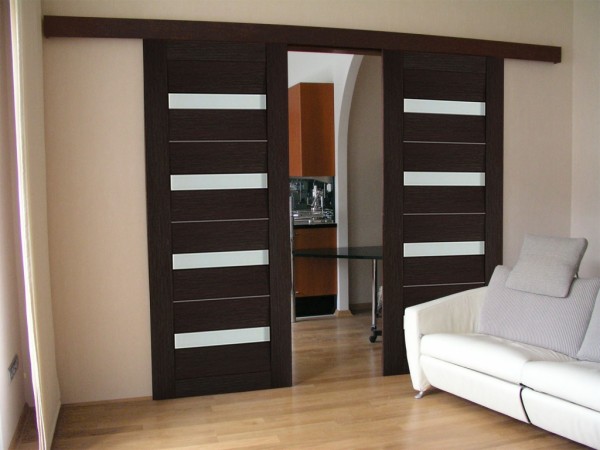
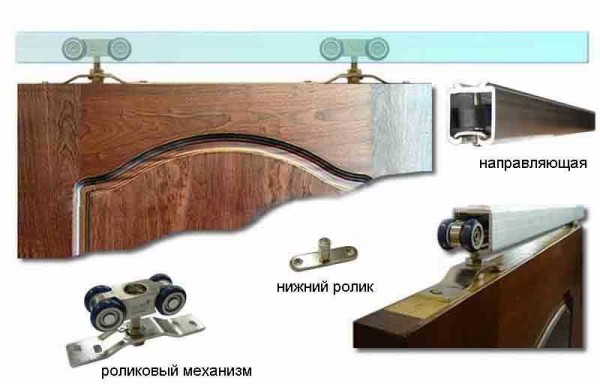
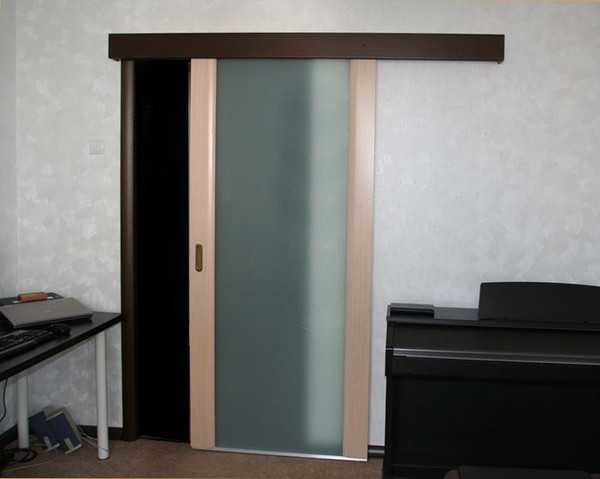
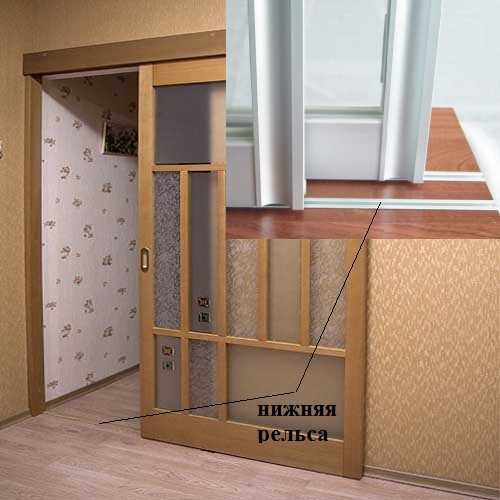
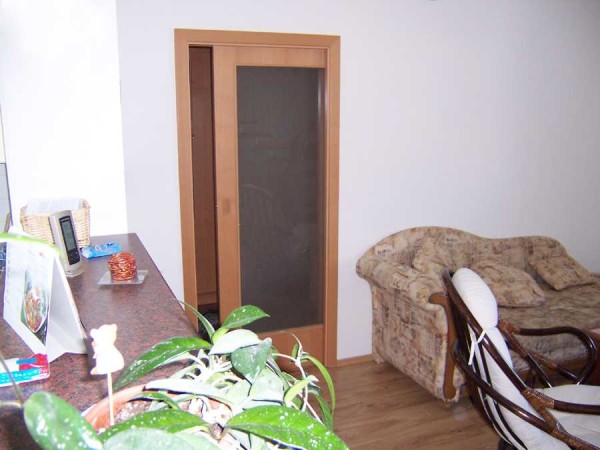
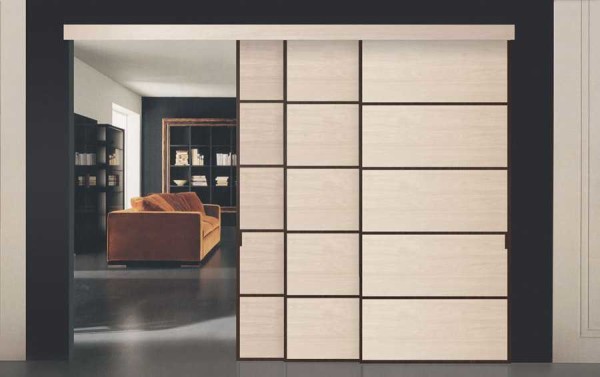
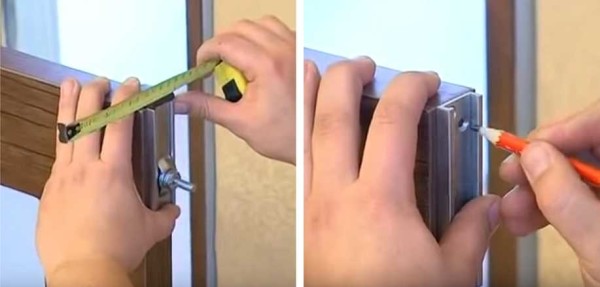
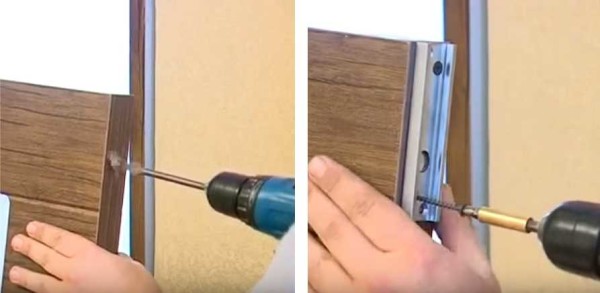
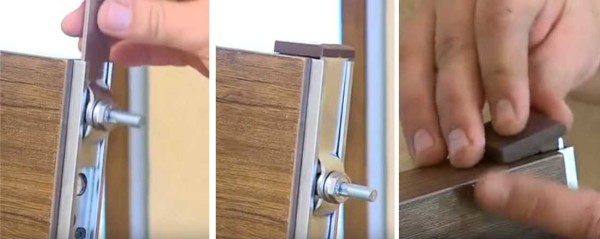
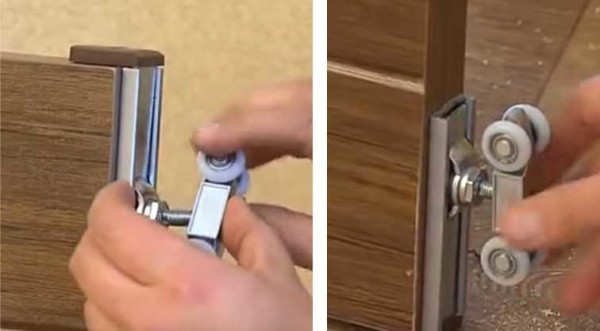
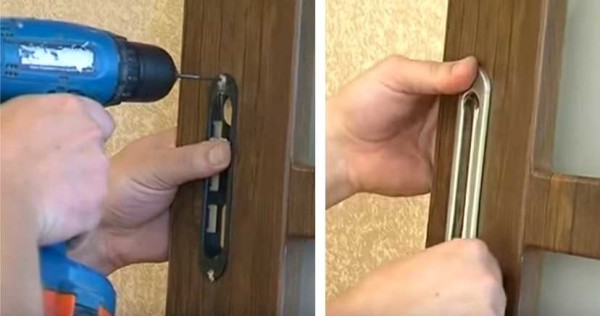
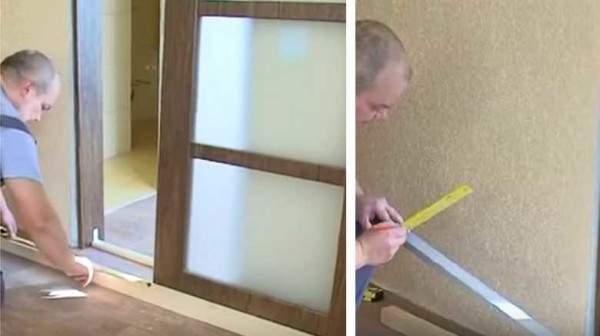
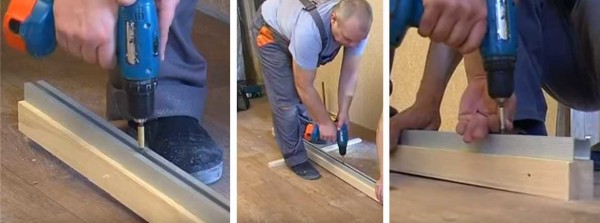

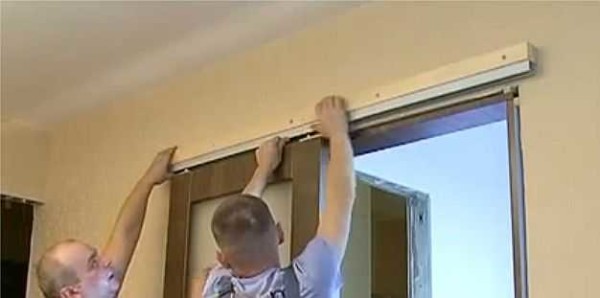
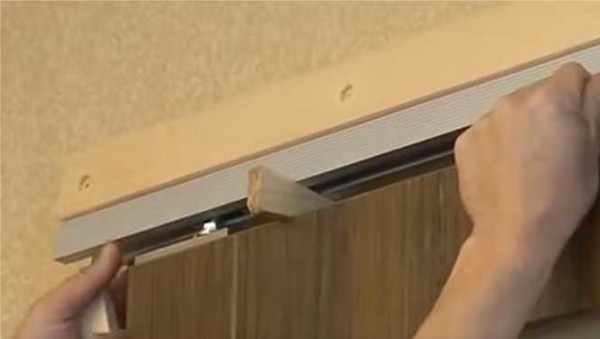


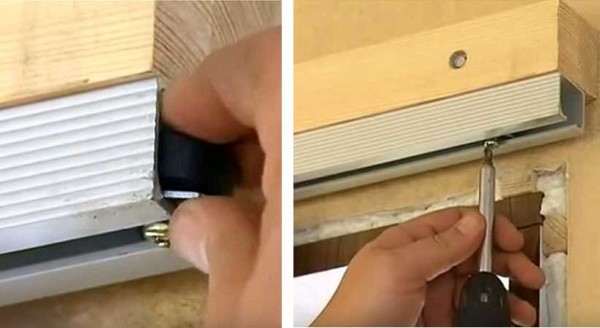
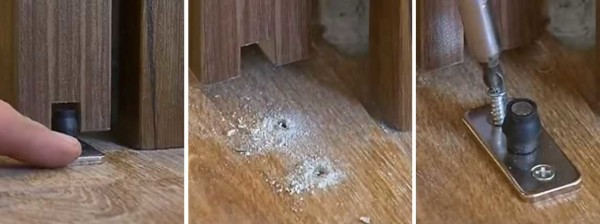
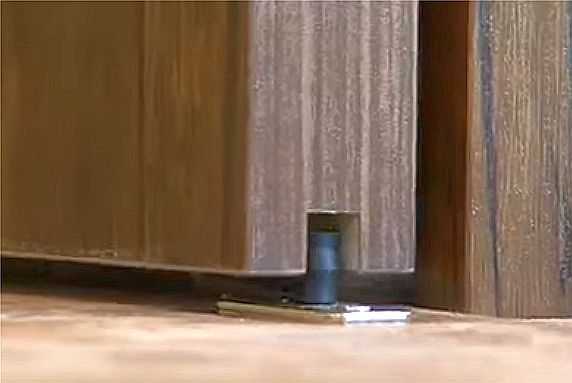
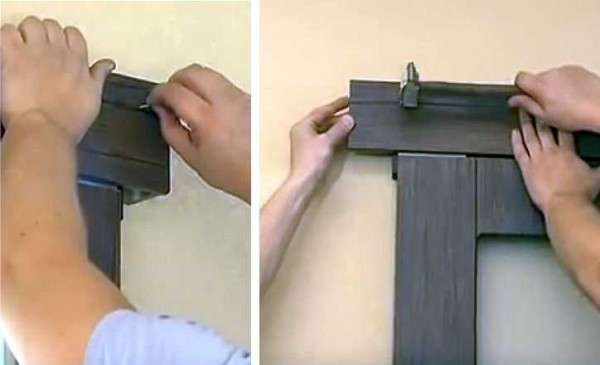

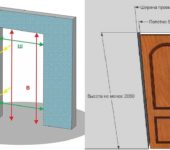
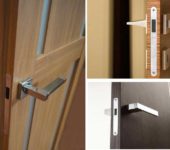







To avoid common mistakes when installing sliding doors, it is best to contact a professional immediately. Thus, you will save your own effort and time, and you will also be sure that the installation of sliding doors was carried out correctly and competently.
For an opening with a size of 2060 by 870, is a 2000 by 800 canvas sufficient? Are excess gaps openings removed with the help of an add-on and a cashier?
Extra centimeters will go away when installing the box. To know exactly, see the dimensions together with the door frame. In some models, for a curtain of 800 mm, an opening of at least 900 mm may be required ...
If you need non-standard canvases, you can contact the Utogrand company, not the cheapest, but very high quality (solid wood + veneer + painting in any color), they will make any size and design (including any glass). I will not give a link, so that they will not be mistaken for advertising.
I want to install sliding doors (2 canvases) Question about opening decoration: is it possible to do without a door frame? As I understand it, the box is needed for attaching hinged doors, but here is an empty opening
Of course, sliding doors can be delivered without a box. But the frame still has to be fixed somewhere ...
what is your phone number